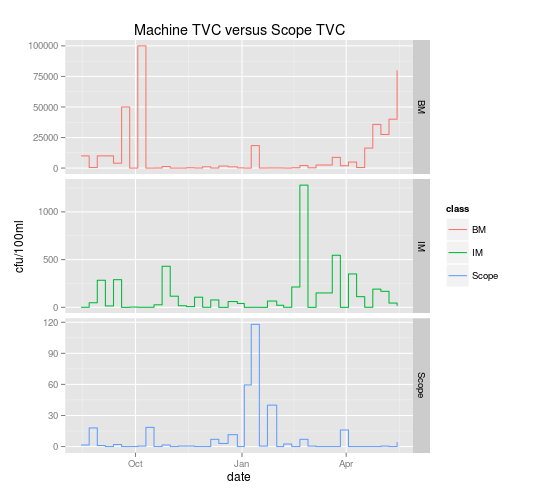I have a set of data: http://pastebin.com/KHLKD8XB
which is based on TVC (total viable counts - i.e., numbers of bacteria) from water going into a machine (BM), water taken from the machine (IM) and water taken from a device which is washed in that machine (Scope).
Whilst the counts are performed on a 200ml sample, results are reported as cfu/100ml, hence you appear to find 1/2 a bacteria in some samples.
library(ggplot2)
testscope<-read.csv2("http://pastebin.com/raw.php?i=KHLKD8XB")
testscope$date<-as.Date(testscope$date)
ggplot(data=testscope,aes(x=date, y=tvc, colour=class)) +
geom_step() + facet_grid(class ~ ., scales="free") +
labs(title="Machine TVC versus Scope TVC") + ylab("cfu/100ml")
Plotted using ggplot2:

My question is: How can I check whether TVC readings from the Scope are related to TVC readings from the machine ?
By eye, I can't discern a pattern between the machine level (IM) and the Scope levels.
Note that although I have the BM data, that is not something we are particularly interested in at present - it is IM versus Scope that we need to understand.
EDIT: Note that the dataset uses natural log, not base 10. My mistake.
